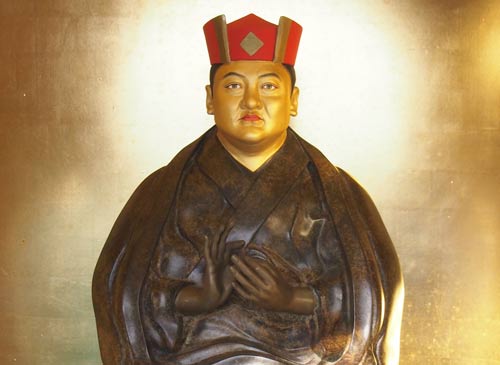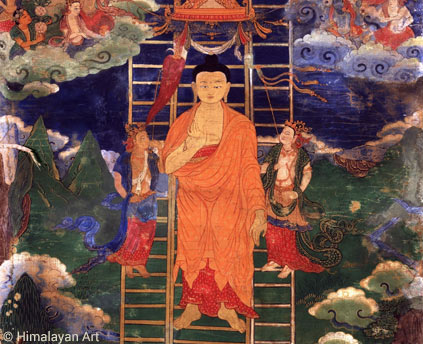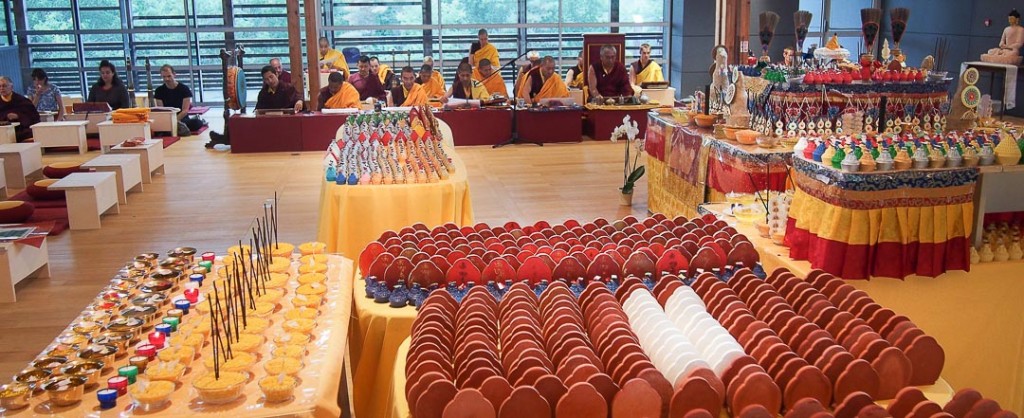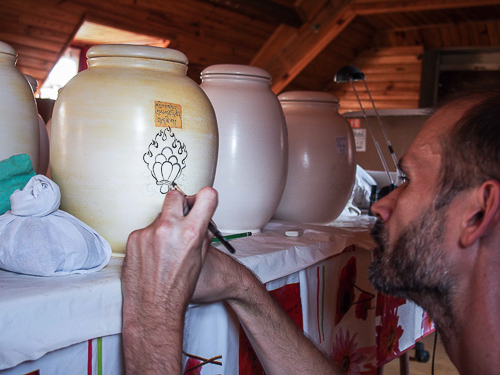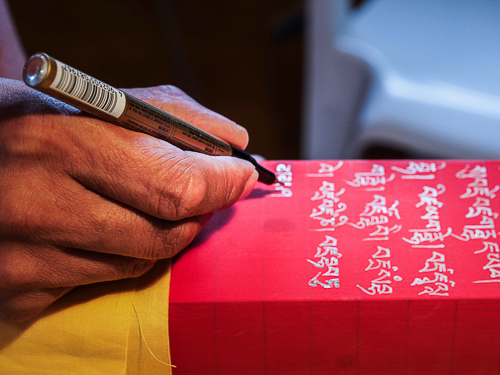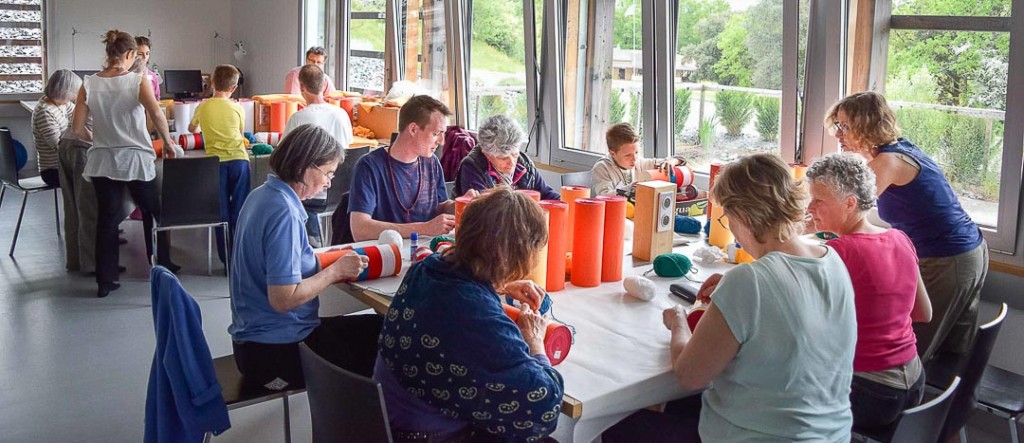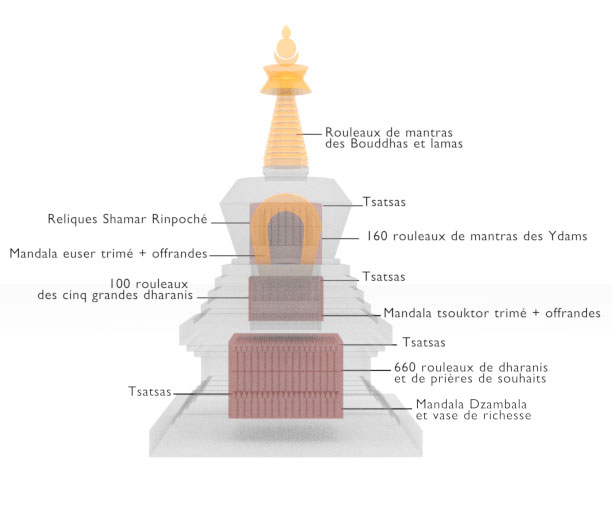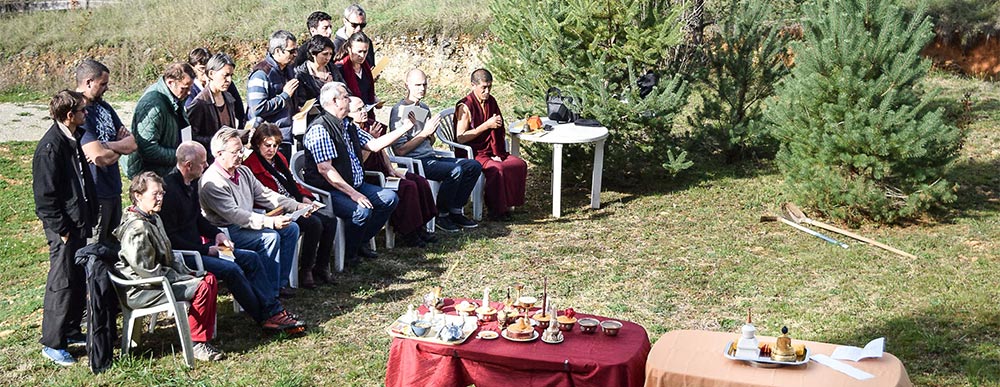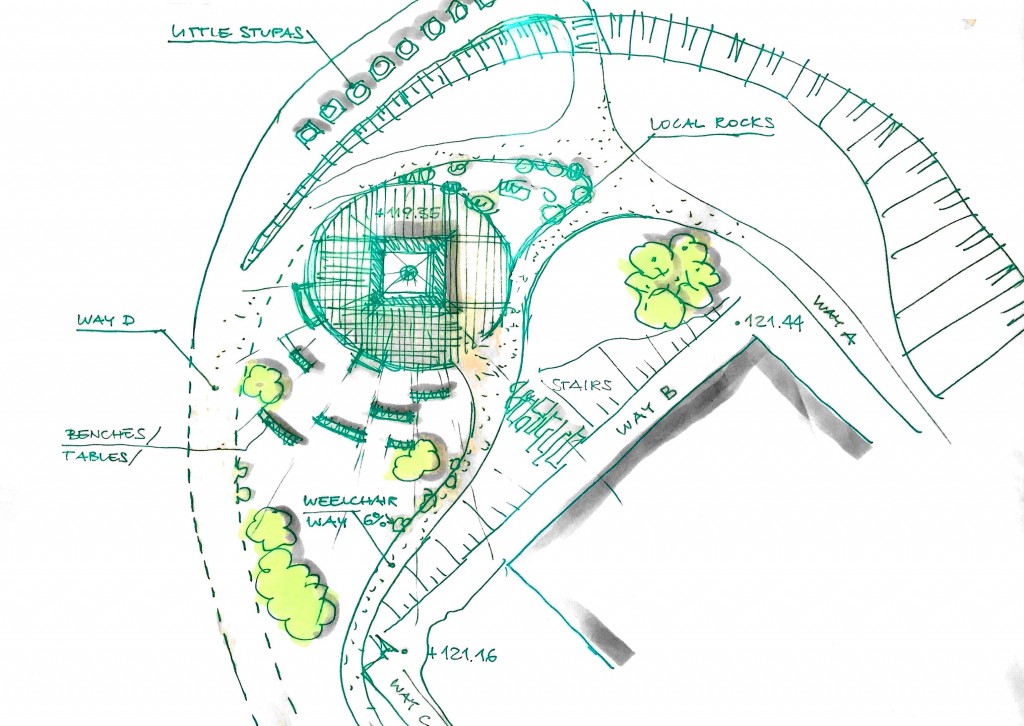Reliquary Stoupa
Shamar Rinpoche's Presence at Dhagpo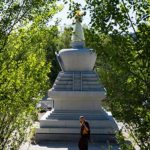
Just as the Buddha’s relics were shared among his disciples and protected within several stupas, those of Shamar Rinpoche will be sheltered in the same way. Dhagpo Kagyu Ling’s new stupa will be among those which welcome a part of his relics. Other parts are already conserved at KIBI, New Delhi and in the recently-inaugurated stupa at his center Bodhi Path Renchen Ulm in Germany. Others will be sheltered in the center Bodhi Path Natural Bridge, in the United States, as well as at Shar Minub Institute in Nepal.
The stupa has been built behind Dhagpo’s Institute. The new space will offer a place to practice and to gather.
What are relics?
A relic is a fragment of the body (bones, teeth, etc.) or an object belonging to a great master or a holy person. According to Khenpo Chodrak Rinpoche, the Tibetan term for “relic” refers to the fact that it is “of great value, so great that it is beyond all price.”
Such a stupa allows one to connect to the possibility of enlightenment through the presence and the blessing of an extraordinary being like Shamar Rinpoche.
Physical relics of a master’s body also benefit us as a reminder that all beings, ordinary and realized, are subject to impermanence.
 Multimedia Archives: Blog and Construction Log Book
Multimedia Archives: Blog and Construction Log Book
Shamar Rinpoche’s Statue
On November 26, 2017, the stupa’s definitive statue was installed. You can relive the moment below. Nestled in the heart of the stupa, this statue is the first statue of 14th Shamar Rinpoche created. Bénédicte Henicz, a French artist and disciple of Shamar Rinpoche, realized the statue with guidance from Jigme Rinpoche.
Here, she tells us more about the steps of its creation.
Consecration of the Stupa, a day of Duchen
On Duchen days, we celebrate the major events marking the life of Buddha. These days are particularly favorable for group practice. On this day, we will commemorate the return of the Buddha from the divine world of Tushita where he went to transmit teachings to his mother, who had taken rebirth there as well as other inhabitants in this sphere.
A Puja in Good Auspice
Before the mantra rolls and tsatsas could be placed within the stupa, they needed to be purified and consecrated. This consecration puja took place during one week at Dhagpo and benefitted from the presence of two great lamas of the Karma Kagyu lineage: Nendo Rinpoche and Lama Nygyam. Both are accomplished practitioners and, furthermore, especially connected with Shamar Rinpoche. [Article & video]
Tsatsas and Bumpas for the Stupa
As the future stupa that will welcome a part of Shamar Rinpoche's relics is slowly taking form, we continue our discovery of the secrets of the fabrication of the various elements that it will contain. This time, let's take a look at tsatsas and bumpas! As many of you already know, a tsatsa is a Buddhist image made of clay or plaster and created using a mold or stamp. (...) As for the bumpas (the Tibetan term), these are vases. They were placed in the foundations of Shamar Rinpoche's stupa in early September. ... [Article & video]
The Sokshing, a Sacred “Spine!”
In the center of the stupa, amidst the sacred substances, relics, and other mantra rolls, there is a fundamental element: the sokshing. The Tibetan term “sokshing,” which is translated as “tree of life” designates an elaborated sculpted tree trunk executed according to specific codes and with corresponding rituals. Generally, it is placed vertically in the center of statues and stupas, acting as a spine. (...) [Article & video]
The “Mantra Workshops”: An Activity in Service of Enlightenment
With less than two months remaining prior to the consecration of the stupa that will house a part of Kunzig Shamar Rinpoche's relics, we are busying ourselves all over to prepare the substances that will fill the stupa. Among these, there are thousands of mantra rolls created in workshops set up at Dhagpo, Kundreul Ling, as well as numerous KTTs. [Article & vidéo]
At the Heart of the Stupa
As a stupa is a reliquary monument, its design reflects its purpose as a receptacle for various substances and sacred objects. Hollowed-out spaces and different types of niches make up its interior. The contents of a stupa and its ritual consecration (rabne in Tibetan) give it its force and make it a support for practice that carries the blessing of the three jewels.
Consecrating the site
Once the location and orientation of the stupa have been determined, a ceremony is carried out to consecrate the place.
This concerns the preparation of the site on a spiritual level, in other words assuring that all goes well from the construction itself to the environment of the stupa.
The Genesis of a Stupa
The adventure of building a stupa begins with choosing the ideal location. Since the Institute's construction, Lama Jigme Rinpoche has expressed the wish for the erection of a stupa behind the building. Indeed, a sizable space is available to be adapted for this purpose and create a place predisposed for practice and meditation.
A quick overview of the Construction
Log Book
(Clik on the pictures
to open each gallery)

# 11 – February 2018
Consecration of the Stupa

# 10 – November 20, 2016
Inserting the Tree of Life

# 9 – November 2016
Bumpa Installation and Mandala Rituals

# 8 – November 2016
The Second and Third Levels of the Stupa

# 7 – November 2016
The First Level of the Stupa

# 6 – October 2016
Assembling the Base of the Stupa
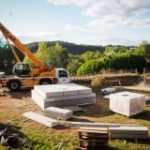
# 5 – October 2016
The Stone Arrives!
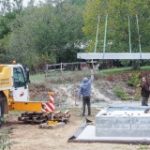
# 4 – Wednesday, October 12, 2016
Consecration Ceremony and Insertion of the Vases

# 3 – September 2016
The Foundations

# 2 – September 2016
Practice of Smoke Offering and Purification by Fire
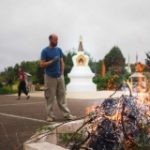
# 1 – August 28, 2016

